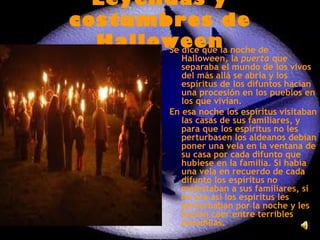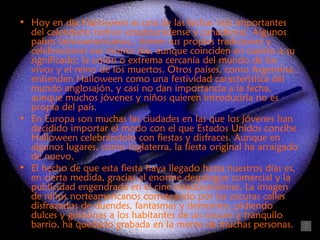Este documento resume el origen y las tradiciones de Halloween. Explica que Halloween tiene sus raíces en las celebraciones celtas y fue transmitido a América del Norte por inmigrantes irlandeses. También describe las leyendas sobre espíritus visitando casas y la costumbre de tallar calabazas. Finalmente, resume cómo la festividad se ha popularizado en otros países a través de la influencia comercial y cinematográfica estadounidense.













